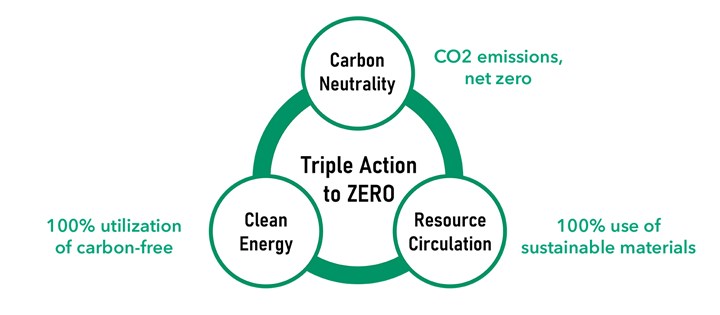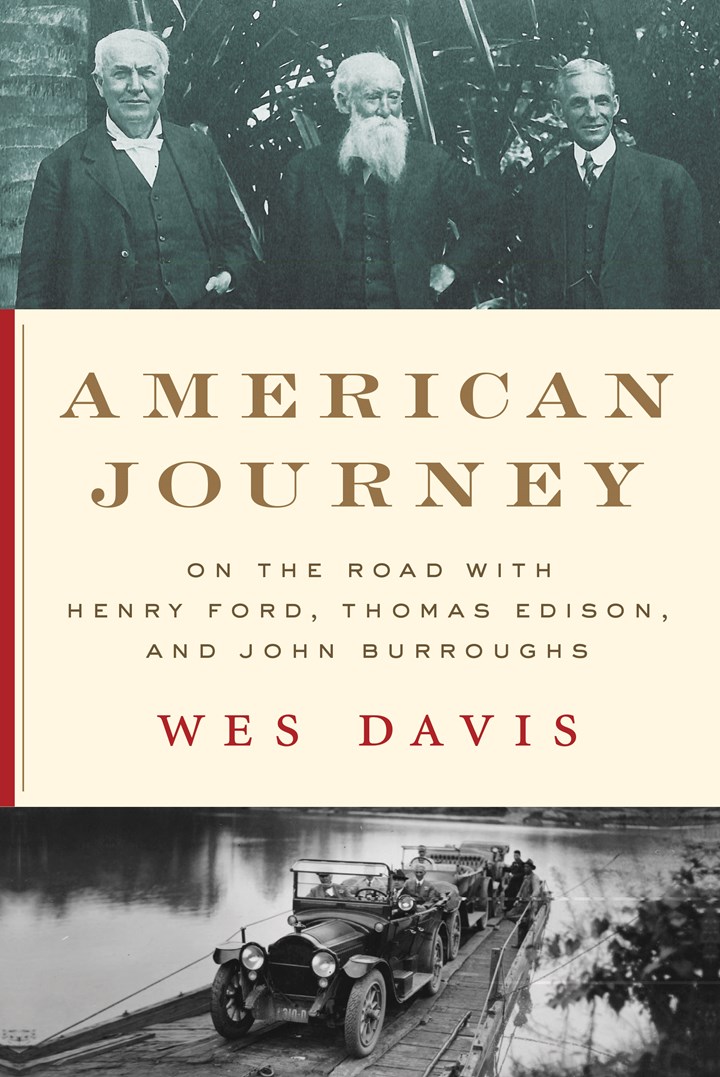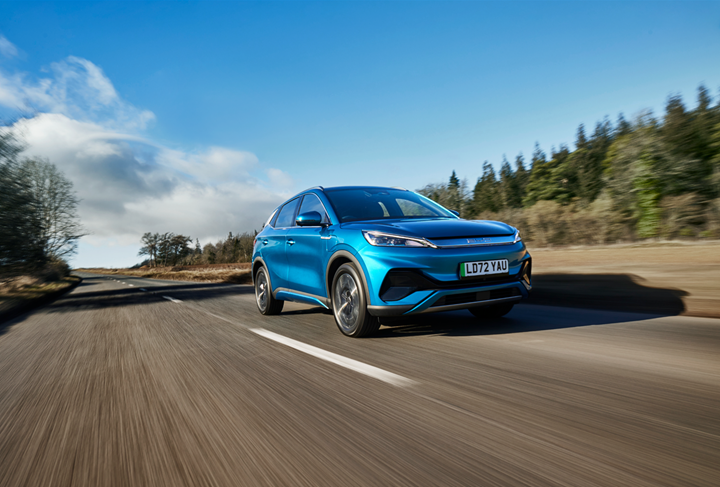on VW's van, Honda's zero carbon plan, a Rolls headliner, & OEM EV effort comparos
VW brings the ID. Buzz to Surf City (literally). . .Honda is working to become completely carbon neutral (which means more than EVs). . .Rolls brings additional astronomy to its headliners (starry, starry night). . .how an environmental org ranks OEMs on their EV efforts. . .vacationing with Henry Ford. . .
VW Bringing the Buzz

VW now & then. Will the ID.Buzz electric van bring the company the same spark that the earlier Microbus did? (Image: Volkswagen of America)
Back in 1984 when Don Henley sang “Out on the road today I saw a Deadhead sticker on a Cadillac,” he was undoubtedly being ironic, as it would be unlikely to see a Dancing Bear on a DeVille, Seville, or even an Eldorado Biarritz convertible.
It would more likely adorn a VW Microbus, the preferred ride of surfers and people Ken Kesey chronicles in The Electric Kool Aid-Acid Test.
It was a different day then.
Now the attendance at Dead & Company’s final tour resembles more a 401(K) conference than the remaining citizens of Woodstock Nation.
So the time is right for Volkswagen to bring to America the all-electric ID. Buzz, the successor to the legendary Type 2.
The three-row vehicle has plenty of room for getting the whole crew to a concert venue or simply taking the kids to school, with the latter being more likely than the former.
Pablo Di Si, president and CEO of Volkswagen of America:
“The zero-direct emission ID. Buzz is the spiritual reincarnation of the Microbus, reimagined for our electric future. It is practical, sustainable, and packaged in an unmistakably fun way that is classic Volkswagen. With its launch, the Bus will once again become our brand hero in America.”
The launch will occur next year.
“Didn’t I See This Before. . .?”
You wonder.
Yes, the ID. Buzz has been somewhat on the scene since the start of 2017 when a concept version of the vehicle was introduced at the North American International Auto Show.
And actual production versions of the vehicle have been available in Europe since Q4 2022—but these vehicles are different from the one officially revealed in Huntington Beach, California, (a.k.a., “Surf City”) last week.
For one thing, in Europe the vehicles are either two-row passenger or a cargo version.
And those two are smaller.
The new ID. Buzz has an overall length of 192.4 inches and a 127.5-inch wheelbase. The Euro version numbers are 185.5 inches and 117.6 inches, respectively.
And while the European spec model debuted with a 201 hp permanent magnet synchronous motor driving the rear axle, the U.S. model’s is 282 hp. (An AWD version is available, too.)
And the battery for the U.S. is 91 kWh vs. the Euro 82 kWh.
All versions—Euro and American—are based on the VW MEB platform.
“Where Will It Be Built?”
At a VW plant in Hannover.
But one interesting thing about that (which sort of goes to that cargo version):
It is a Volkswagen Commercial Vehicles plant.
“It Looks Good, Inside and Out.”
Yes it does.
Exterior styling was performed by Marco Pavone. Tomasz Bachorski the interior.
“Range?”
Not yet disclosed. (Remember: this essentially the sheet being removed from the production version to garner attention for the ID. Buzz—like this. And it brings up the point that the price is still undisclosed, as well.)
This Could Be It
Volkswagen of America has been looking for that “brand hero” for a number of years, arguably since the end of the Beetle (not the New Beetle) in 1979.
The ID. Buzz could be it.
Not only does it have styling that could appeal to the aforementioned suburban Deadheads, but also to the generations who have grown up with a Cozy Coupe in their past, as the ID. Buzz aesthetic has some resonances with that.
Significant bandwidth.
Minivans have not been particularly popular in the U.S. market.
But this EV from VW may change that.
///
Honda’s Route to Zero

Honda is working an approach where the vehicles it build and the processes it performs won’t have a negative impact on the environment. (Image: American Honda)
“We want to once again create a company that people want to exist. I want to lay the foundation for our second founding period, including setting the company on its next growth trajectory, and pass the baton to the next generation. Ultimately, my goal as president is to make Honda a company where customers say, ‘I am glad Honda exists!’ or ‘Honda did it again!’ That is what I am aiming for.”-- Toshihiro Mibe, president, Honda Motor Co.
Jay Joseph, Vice President, Sustainability & Business Development, American Honda Motor Co., says that prior to Mibe becoming president of global Honda in April 2021 he’d spent his career performing research and development in the internal combustion engine sphere.
Yet, Joseph points out, despite Honda being a massive engine manufacturer (remember: its not all cars and trucks, but motorcycles and generators and more, so it is producing some 30 million engines per year), Mibe, essentially on day one of his new job, talked about making a huge transition, one that will take Honda toward a goal of carbon neutraility by 2050 and away from internal combustion engines, something that Mibe had spent the earlier part of his career engineering.
The simplistic thought would be: “Honda is going to be making electric vehicles.”
Which is true—the company is committed to having all of its sales of Honda and Acura vehicles in the U.S. to be battery-electric or fuel-cell electric by 2040.
But it is only part of it.
The Triple Approach
Joseph says becoming carbon neutral certainly involves EVs and FCEVs, but they are a means toward the end, not the end in themselves.
Joseph says that the approach they are pursuing at Honda is called “Triple Action to Zero.”
They are looking to make all products and activities carbon neutral, which includes using energy from renewable energy sources (he cites, for example, that they have replaced a diesel backup generator at the American Honda data center in Torrance, California, with a fuel cell, which is the first of many deployments) and “resource circulation,” which is full-on recycling: “Entirely new Hondas out of old ones,” Joseph says.
He explains that nowadays about 66% of automotive steel is recycled—but not recycled into other vehicles but into things like construction applications. This, Joseph says, will change at Honda. Old Accords will become new Accords.
Another objective is to “no longer have to dig holes” to obtain materials for batteries: again, reuse.
A New Approach
One of the interesting aspects of this is that this isn’t just a shift to a different technology.
It is requiring a different way to getting things done.
Joseph says, for example, Honda has historically been “fiercely independent.” Now it recognizes that alliances are important. So there is a joint-venture battery plant it is building in Fayette County, Ohio, with LG Energy Solutions (initial investment: $3.5-billion; expected to reach $4.4-billion). Not only is it working with General Motors on the development of electric vehicles, it is also collaborating on the Cruise Origin autonomous vehicle and the two companies have a joint venture, Fuel Cell System Manufacturing.
There is a recognition that the approach must be changed.
But for all the adjustments that are necessary for the “second founding,” Joseph emphasizes: “The Honda Philosophy* won’t change.”
==
*The Honda Philosophy consists of elements including respect for the individual, “The Three Joys” (Buying, Selling and Creating), the company principle (“Maintaining a global viewpoint, we are dedicated to supplying products of the highest quality, yet at a reasonable price for worldwide customer satisfaction”), and management policies (e.g., “Strive constantly for a harmonious flow of work”).
///
Philosophy, Science, Math & Rolls-Royce

The Moon, the stars & a Rolls headliner. (Image: Rolls-Royce Motor Cars)
Although we are beyond, at or near the point at which school semesters have come to a close, here are a couple of things to know to keep the gray matter supple.
There is the “Sorties paradox.”
One way to think of it is how many grains of sand are needed to make a heap. . .and if you have what is generally considered to be a heap of sand, how many can be removed before it is no longer a heap?
Which brings us to the issue of where “outer space” begins.
NASA puts it at 50 miles above mean sea level.
But other organizations, particularly those in Europe, put it at 62 miles
That is called the “Kármán Line,” after 20th century aerospace engineer Theodore von Kármán, who calculated it.
In its capsule biography of von Kármán, NASA describes him as “arguably one of the greatest minds of the twentieth century.” You’d think they’d go with his line, but. . . .
Apparently, like heaps of sand, there is no certain line where space begins.
Which brings us to. . .
Rolls-Royce.
“With Black Badge Cullinan Blue Shadow, we venture to the fabled Kármán Line, where the constraints of Earth give way to the infinite freedom of outer space: a zone of incomparable beauty, mystery and boundless possibility. In creating Blue Shadow, the Bespoke Collective of designers, engineers and craftspeople captured this spirit by embarking on their own voyage of discovery, once again pushing the boundaries of craftsmanship.”-- Torsten Müller-Ötvös, Chief Executive Officer, Rolls-Royce Motor Cars
This is a special edition of the Rolls EV SUV.
The company is building 62 of them. (All are spoken for. Not necessarily all to space enthusiasts.)
Moving on to Math. . .
For the past several years Rolls has been offering the “Starlight Headliner.” Little fiber optic “stars” above the interior.
For the Black Badge Cullinan Blue Shadow they are taking this to a higher level:
1,183 “stars” shine in the leather headliner: 799 white and 384 blue.
And the headliner isn’t just adorned with the lights.
There is an embroidered image of the Moon.
To create that representation of space requires two days.
And 250,000 separate stiches.
Even the seats are special.
There are perforations that illustrate the surface of Earth as seen from space.
Each seat has over 75,000 perforations. For the land masses the holes are 0.8 mm in diameter. The sea is represented by 1.2-mm holes.
A Few More Numbers
Six. The number of layers of paint used on the fascia and door panel. There are five blue layers with a deep black hue. The clear coat on top contains blue and clear glass particles that are 0.05% of the layer.
Three. As in 3D printing. The Spirit of Ecstasy hood ornament is 3D printed with titanium. It is finished with a thin blue lacquer in keeping with the overall theme.
Hmm. . .
“Blue Shadow is a testament to our relentless pursuit of perfection and a celebration of the spirit of exploration, designed for the unique individuals who expand horizons and represent the very best of human endeavour.”-- Müller-Ötvös
How is perfection measured and how would one know?
Discuss.
///
Henry Ford Goes on Vacation

Consider the following list as one of those “what doesn’t belong here” quizzes:
- Thomas Edison
- Henry Ford
- Harvey Firestone
- John Burroughs
You know who the first two are, and possibly that they were pals. Although you may not know who the third was, you certainly recognize the surname, so the tire magnate is in good company with the first two.
The first three are industrialists.
But John Burroughs. . . No, he was not the founder of the American Arithmometer Company, which became Burroughs Corporation. That was William Seward Burroughs.
John Burroughs was a naturalist and writer who was an early American environmentalist.
You might think he doesn’t belong on the list.
But the four men were the self-named “The Vagabonds.” From 1915 to 1924 they traveled by car (not always Model Ts: Packards and Simplexs, for example, were on the tours, too) on summer camping trips.
Burroughs, as you might imagine, was something of a vehicle skeptic in the early years of the industry. He wrote in The Atlantic, “wisdom cannot or will not come by railroad, or automobile, or aeroplane, or be hurried up by the telegraph or telephone. She is more likely to come on foot, or riding on an ass, or to be drawn in a one-horse shay, than in any of our chariots of fire and thunder.”
Ford was a, yes, fan of Burroughs. He saw those words and knew he had to do something. In 1913 Ford sent Burroughs a Model T.
Burroughs learned to drive and enjoyed the freedom it provided him. Let’s face it: he could get places much more quickly in a car than on foot, and he probably discovered he could take Wisdom for a ride with him.
And the rest was, as they say, history.
History chronicled by Wes Davis in American Journey: On the Road with Henry Ford, Thomas Edison and John Burroughs (W.W. Norton; 384 pp.; $30).
“Where Ford had once hoped to convince Burroughs that modern technology was compatible with his love of nature,” Davis writes, “the automaker had come, over the course of his travels with Burroughs, to admire the traditional mode of life that the naturalist represented to him.”
Somehow the meeting of minds is something that nowadays seems like what happened only in days gone by.
///
At the Risk of Ending This On a Negative (or Skeptical) Note. . .

The BYD ATTO 3 EV. BYD is the largest manufacturer of electrified vehicles in China and is working to become the #1 EV purveyor in the world. (Image: BYD)
“By our estimate, ZEV [zero-emissions vehicle] sales will need to reach almost 100% for LDVs [light-duty vehicles] in the major markets by 2035—and meet an interim target of 77% in 2030—to align with a 2° C climate trajectory; additional measures will be needed to align with a 1.5° C pathway [i.e., the number from the Paris Agreement on the environment].”—“The Global Automaker Rating 2022” by The International Council on Clean Transportation
Seventy-seven percent of light-duty electrified by 2030?
Not likely to happen, even with plug-in hybrids and fuel cell-powered vehicles counted by The ICCT as ZEVs. (Plug-in hybrids have full electric range, but they also have internal combustion engines.)
Ranking the Companies
The organization has created a ranking of how global OEMs are doing vis-à-vis electrification efforts.
They’ve found two companies in the overall assessment—predicated on Market Dominance, Technology Performance, Strategic Vision—that are labeled as “Leaders”:
- Tesla, with 83 points out of 100
- BYD with 73
Then there are “Transitioners”:
- BMW, 56
- VW, 53
- Stellantis, 50
- Geely, 48
- Renault, 47
- Mercedes-Benz, 45
- GM, 45
- SAIC, 44
- Great Wall, 38
- Ford, 38
- Hyundai-Kia, 38
- Chang’an, 36
And then “Laggards”:
- Toyota, 30
- Honda, 28
- Nissan, 27
- Tata, 27
- Mazda, 10
- Suzuki, 0
When the largest vehicle manufacturer, Toyota, is a “Laggard,” and the second largest, VW, is a “Transitioner,” then those market projections for both 2030 and 2035 seem. . .absolutely imaginative.
Another Data Point
And while on the subject of reports, here’s this, from the “Global EV Outlook: Catching Up With Climate Ambitions” by the International Energy Agency (IEA):
“Under the IEA Stated Policies Scenario (STEPS), the global outlook for the share of electric car sales based on existing policies and firm objectives has increased to 35% in 2030, up from less than 25% in the previous outlook. In the projections, China retains its position as the largest market for electric cars with 40% of total sales by 2030 in the STEPS. The United States doubles its market share to 20% by the end of the decade as recent policy announcements drive demand, while Europe maintains its current 25% share.”
That’s a long way from 77%.
Evidently, there is a lot of catching up to do.
~~~
RELATED CONTENT
-
On Fuel Cells, Battery Enclosures, and Lucid Air
A skateboard for fuel cells, building a better battery enclosure, what ADAS does, a big engine for boats, the curious case of lean production, what drivers think, and why Lucid is remarkable
-
Engineering the 2019 Jeep Cherokee
The Jeep Cherokee, which was launched in its current manifestation as a model year 2014 vehicle, and which has just undergone a major refresh for MY 2019, is nothing if not a solid success.
-
GM Is Down with Diesels
General Motors is one company that is clearly embracing the diesel engine.


.jpg;width=70;height=70;mode=crop)






